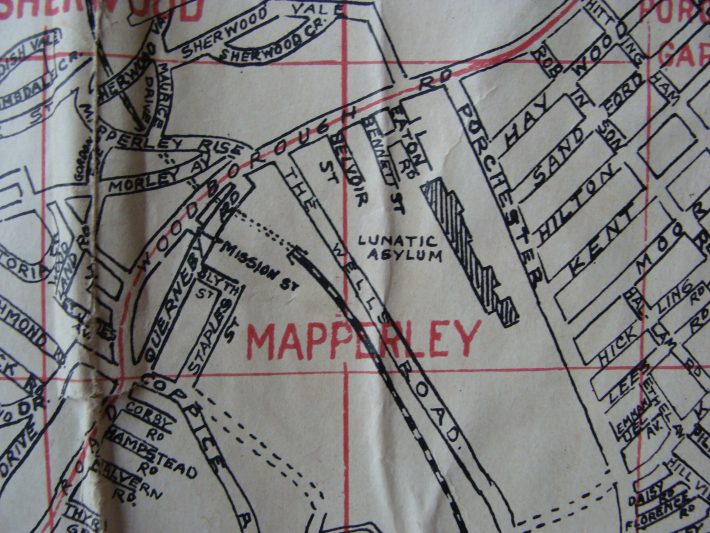Mapperley Plains and its shops mean a lot to the locals. They also mean a lot to the thousands who pass through by car. Some stopping for a visit, others commuting or bypassing the north of the city. Lucky for us and the Mapperley traders that we can commute!
Mapperley owes its existence to the car and the roads that supply it. At over 400 feet above sea level and on a ridge between the main A60 and the river, who would walk up it without good reason? 200 years ago few people would have had good reason.
‘Mapurley Barns’ were recorded in 1496 after Thomas Mapurley and the location was nothing but a forested hamlet described later as a ‘pleasing embellishment to the Mansfield and Southwell Roads’,
Clay quarries and brick making gave Mapperley its ‘raison d’etre’ in the 19th century. The railway and substantial tunnels beneath made it accessible. Employment followed but this place was still remote by the nature of its terrain.
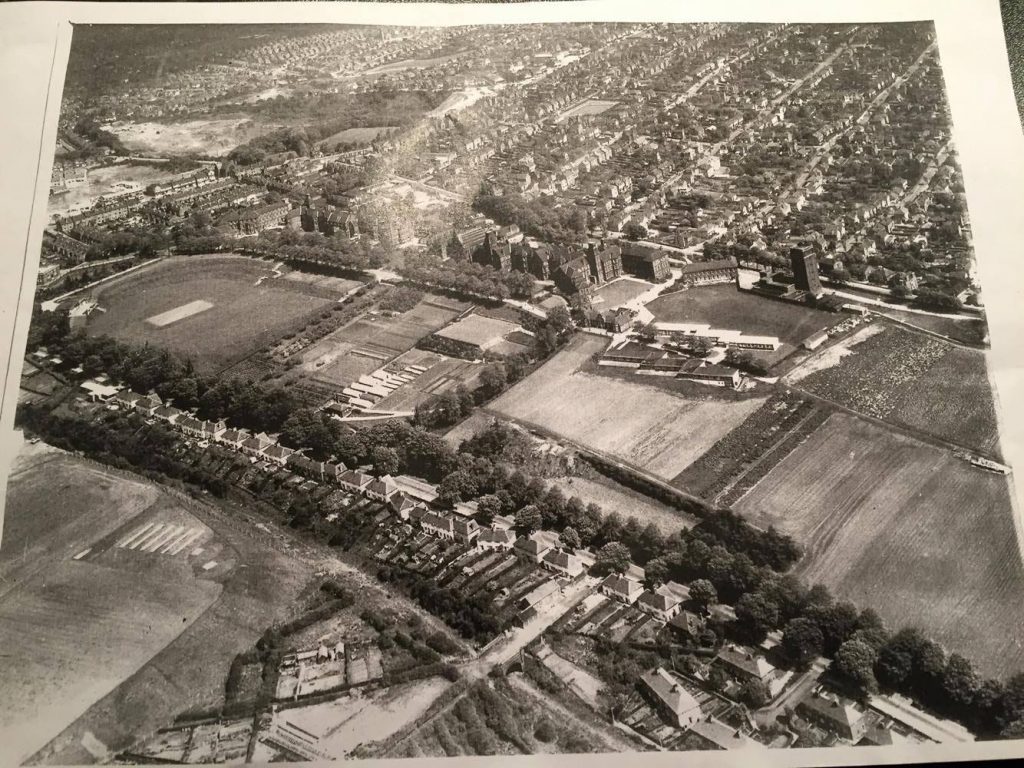
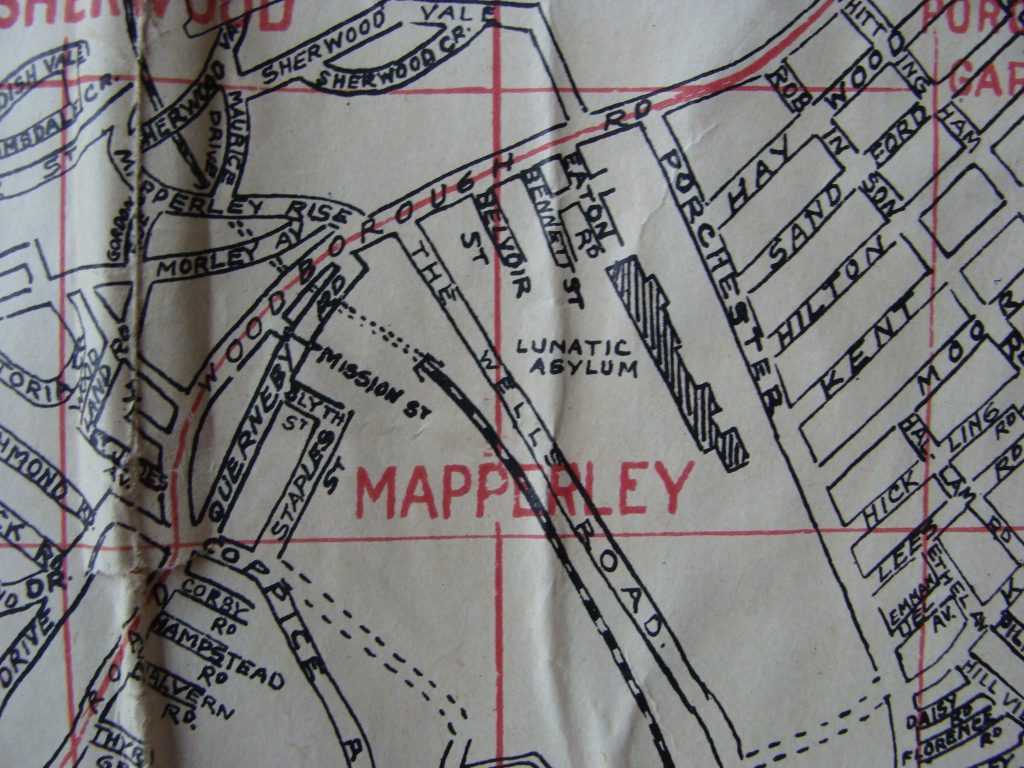
No wonder that Nottingham’s two asylums were located there!
Coppice Hospital (now Hine Hall) was for middle class families and Porchester Road (c1880) was for… well the 500 other poor souls who had succumbed to mental illness.
Meanwhile the local philanthropic brick company lead to the area known as Porchester Gardens being purchased from Earl of Carnarvon (c1886) for £13,000.
These town gardens or allotments were the reward to the brick workers. A place of recreation in what was still a remote place compared to the city, two miles away, down Mapperley Hill (now Woodborough Road). Even more remote from the magnificent St Pancras station that was built with its bricks. The gardens also has its own pavilion and tea gardens. As a feature there was a huge bole of an elm tree that seated 20 people!
The motor car had not yet arrived but the tramcar had, and the trek up Mapperley Hill on foot was now optional.
In 1901 Porchester Gardens extended just beyond Moore Road. But by 1920 the gardens extended past Kenrick Road. Housing was taking place on both sides of Plains Road. Woodthorpe was also being developed. Despite this Marshall Hill Farm and other farms maintained the rural aspect.
Plains Road had become accessible by tramcar and the gradient of 1-11 ½ had been mastered. With the terminus at Porchester Road, workers, gardeners and visitors to the asylum could sit back and enjoy the views.
The roads Whittingham, Bennett, Robinson, and Haywood were named after the families who bought and created Porchester Gardens.
Despite the importance of Woodborough Road and Plains Road, the Ministry of Transport Act of 1919 gave it B status. The B684 had a lower traffic density than the main trunk roads, or A roads.
Whatever its title, Plains Road and Mapperley was now becoming more populated and over the next 50 years the motorist commuter would mean that the B684’s attractiveness as an alternative route into Nottingham would increase. So too would its ‘traffic density’. No wonder that many motor dealers located there.
This increase was gradual though, and it is worth noting that in 1926 Westdale Lane was described as ‘quite in the country’.
In 1931 the Nattriss family started their car sales and servicing on Porchester Road. The family raced vintage sports cars and would expand onto Woodborough Road. Our obsession with the motor car was under way and unsurprisingly, the tramcar (which had extended to Westdale Lane) ceased operating 1936.
By this time, houses had been built. Schools and churches followed. The barn at Marshall Hill Farm had become St James’ Church The following link is worth a look History of St James
Woodthorpe and Carlton were now established as residential areas.
Following the second world war the B684 became the shopping and commercial area it is today becoming ever reliant on the car. The railway was to suffer a similar fate to that of the tramcar before the war.
By 1962 house building was now taking place on the site of the area’s disused quarries.
Mapperley Hospital was now the main employer and in 1966 Dr Duncan Macmillan was on national television in a documentary where he described his methods as ‘industrial therapy’!
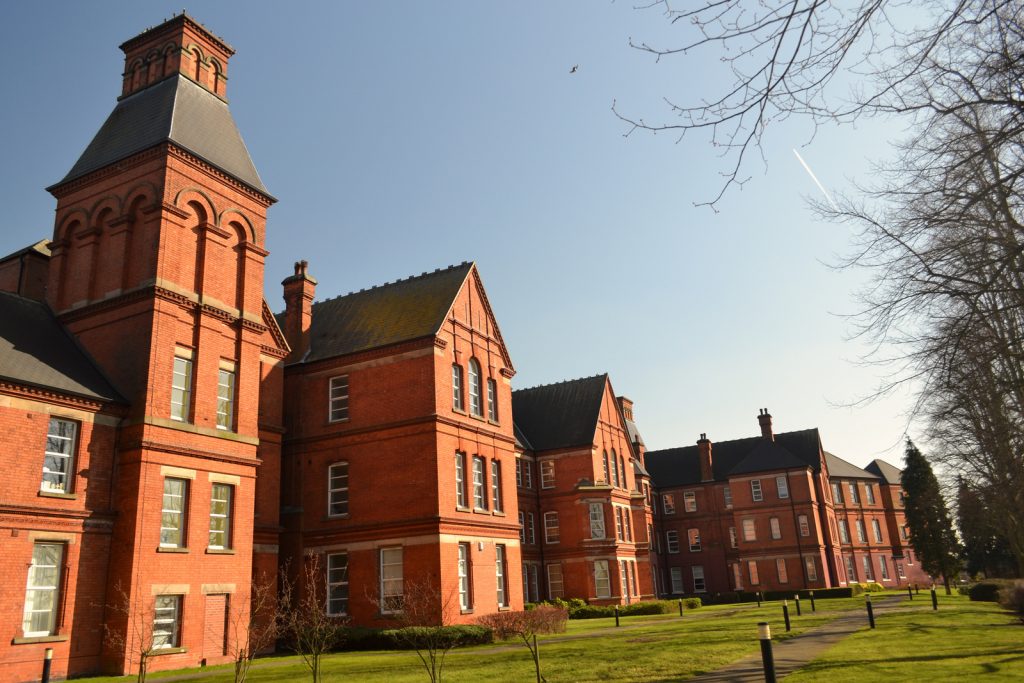
Mapperley’s shopping precinct opened in 1968, ‘catching the eye’ of the visitor! Mapperley’s shops have always been functional and the Top Tub launderette has survived to this day.
Mapperley Hospital made the news in 1974 when Dr Julius Kay (senior psychologist) calls for the death penalty for ‘political killers’ in reference to the Provisional IRA.
In 1989 the local authority made a compulsory purchase of the shop forecourts to allow road widening and parking bays, amazingly with some objection. The importance of allowing the motorist to park easily and at no cost have been proven to be crucial to Mapperley’s economic success. Local politics fought an election on it as recently as 2012.
So there we have it. Plains Road has a short but significant history. Much has changed but so too have some things remained constant. The treatment of mental health can fit both aspects of the last sentence!
Enjoy Mapperley.
Treat it with respect.
Walk around it if you can.
Visit its shops.
Wash your 1970’s kaftan in the launderette. You won’t be the first!
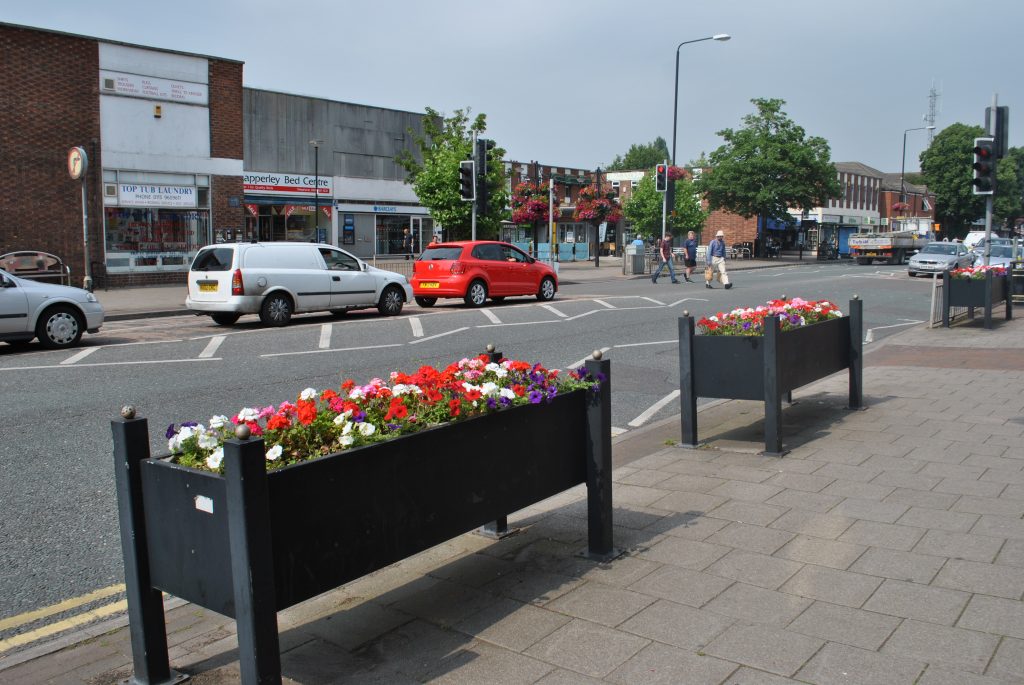
Thanks for reading.

